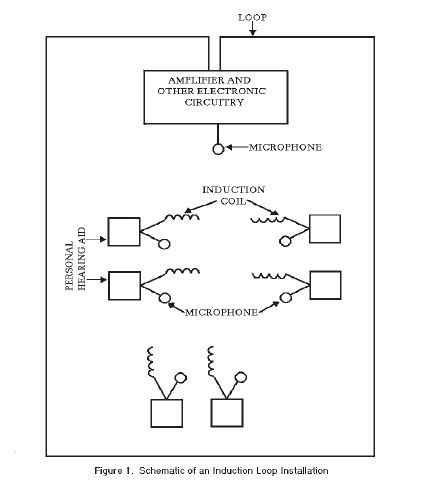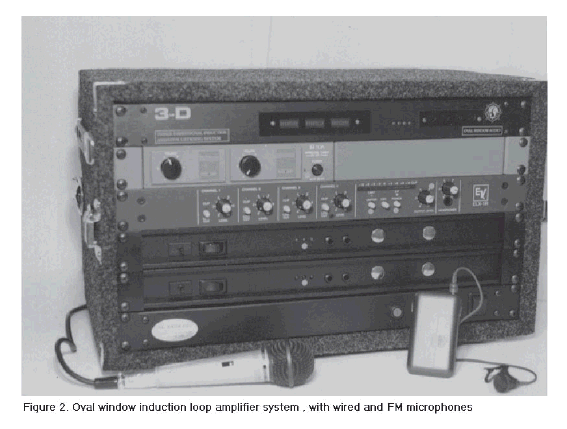2.1.1 General Description
In an IL system, the output from an amplifier is delivered to a loop of wire placed around the circumference of a designated "listening area". The audio signals from the sound source (usually a microphone, though other audio sources can be accommodated) are amplified and sent as an alternating electric current through the wire loop. This electrical current creates an electromagnetic field around the wire. This electromagnetic field - basically the original audio signals coded in a different form - can be accessed by someone wearing a hearing aid (or special IL receiver) switched to the telecoil position. The telecoil is an "induction" coil, one in which an electrical current is "induced" when it is placed within the electromagnetic field. In other words, the information coded in the electromagnetic field is converted to an electrical current. This electrical current is then amplified by the hearing aid and converted back into audio signals. The sequence goes as follows: audio input > amplifier > electrical current in wire loop > electromagnetic field around wire loop > induced electrical current in telecoil > audio output (see figure 1).

IL systems are the oldest - and least employed - of the existing ALS in this country (they are used much more often in European countries). The loop has to be physically placed around the listening area and secured so that it will stay in place. Once properly installed, and given that the listener's hearing aids include "T" coils, an IL system is undoubtedly the most convenient and possibly the most cost effective ALS. To hear the audio, all a person has to do is enter the looped area and switch his/her personal hearing aids to the telecoil position. As long as the person's hearing aids include "T" coils, he or she always has an assistive device "receiver" available. Wireless FM microphones can be integrated into the system and employed by talkers in order to provide instructional flexibility (see figure 2).


User Comments/Questions
Add Comment/Question